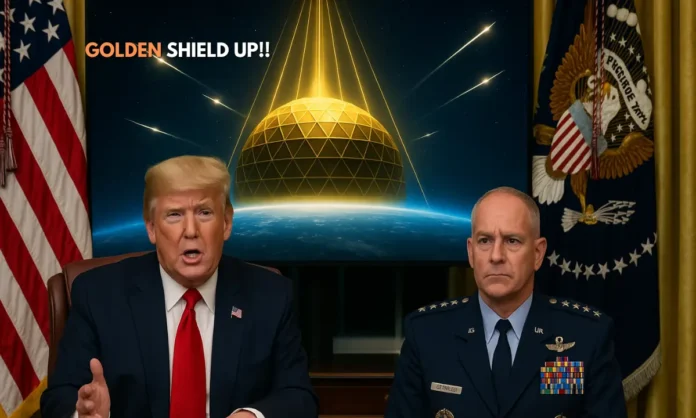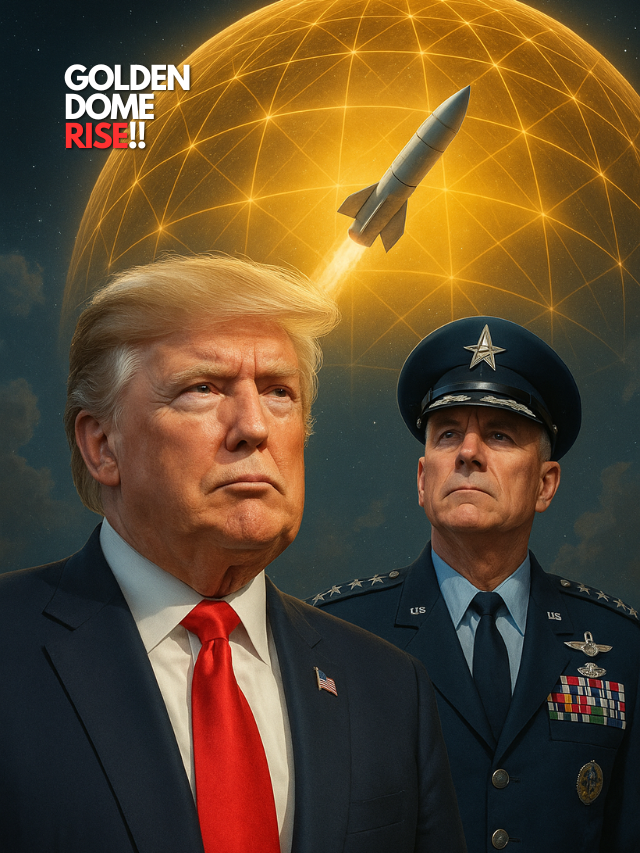SUMMARY
- Donald Trump unveils ‘Golden Dome’ missile defense plan with estimated cost of $175 billion.
- Canada signals interest in joining; US Space Force General Michael Guetlein named as lead.
- Democrats raise concerns over SpaceX, Palantir, Anduril involvement in classified components.
America’s Orbital Shield: The Dome That Could Reshape Global Security
Within four months of returning to the White House, President Donald Trump has ignited global headlines with his announcement of a space-integrated missile defense program dubbed “Golden Dome.” Projected to cost $175 billion and inspired by Israel’s Iron Dome, the initiative aims to counter what Trump calls “next-generation aerial threats” from China, Russia, and rogue states.
In a televised address from the Oval Office, Trump revealed the selection of a conceptual design for the shield and named US Space Force General Michael Guetlein as the head of the operation. While full operational capability is promised by the end of Trump’s current term, insiders suggest that the accelerated timeline reflects both political urgency and strategic anxiety over rising global threats.
This dome, however, is far from metaphorical—it will consist of space-based sensors, sea-launched interceptors, and land-based response systems. Canadian Prime Minister Mark Carney’s office confirmed interest in participating via NORAD, signalling the plan may evolve into a continental initiative.
🚨BREAKING: The "Golden Dome" is here! A $175 BILLION fortress of freedom, shielding America from hypersonic, nuclear, and space threats. Built by Americans, powered by cutting-edge space tech, and engineered for near-100% defense. Reagan dreamed it, Trump’s delivering it! 🇺🇸💥… pic.twitter.com/CQteiLOS4F
— GABRIEL 🪽 (@TheGabriel72) May 21, 2025
From Iron Dome to Golden Dome: Defense as Spectacle and Strategy
- Golden Dome draws structural parallels with Israel’s Iron Dome.
- Includes space-based tracking, laser-enabled interceptors, and AI-driven targeting.
- Estimated launch readiness by late 2028 if re-elected or extended into NATO programs.
Unlike Israel’s reactive short-range interceptors, Trump’s Golden Dome is designed as a multi-layered global net, capable of destroying ICBMs, hypersonic cruise missiles, and unmanned aerial vehicles before they breach American or allied airspace. According to the President, the initiative “will usher in a new era of deterrence, not reaction.”
The announcement arrives amid heightened fears of Chinese satellite weaponization and Russian tactical missile modernization. The Space Force—which saw funding boosted under Trump’s prior term—has been repurposed under this program to act as the ‘orbital vanguard’ of U.S. homeland defense.
The naming of General Michael Guetlein, a strategic space operations expert, is seen as a deliberate nod to the Pentagon’s shift from ground to orbital warfare.
Musk, Money, and the Critics: Democrat Fears Over Privatized Defense
- SpaceX, Palantir, and Anduril named as top contenders for system components.
- Democrats express unease over classified tech outsourcing to private billionaires.
- Concerns grow over transparency, cost escalation, and civilian surveillance overlap.
The program’s reliance on private-sector partners has triggered unease among Democrats, with Elon Musk’s SpaceX, Alex Karp’s Palantir, and Palmer Luckey’s Anduril already mentioned as key technology developers. Critics argue that defense infrastructure of such magnitude should remain under full government oversight, especially given the dual-use nature of AI and orbital sensors.
Some lawmakers also point out that the $175 billion estimate could balloon, especially as cost assessments are being led by the very companies expected to benefit from the contracts. “We’re about to outsource the digital firewall of North America to a trio of billionaires,” said one Congressional aide.
Trump, however, has brushed off these concerns as “the usual swamp talk,” framing Golden Dome as both a technical marvel and a political necessity.
The New Doctrine: Security in the Age of Space Sovereignty
The Golden Dome isn’t just about defense—it’s about redefining American strategic posture. By formalizing a missile defense system that spans terrestrial and extraterrestrial domains, Trump is declaring that future wars won’t be won on battlegrounds—but in orbit and code.
The initiative further places pressure on NATO and regional allies to upgrade their own capabilities, or risk becoming liabilities in a post-ballistic landscape.
Whether Golden Dome becomes a reality or remains a glittering campaign symbol, one thing is clear: Trump has launched a new space race—this time not for flags or footprints, but for firewalls and force fields.



